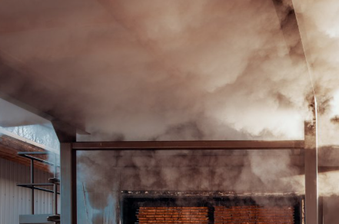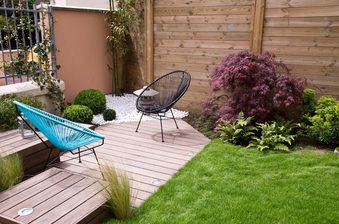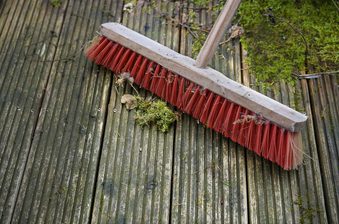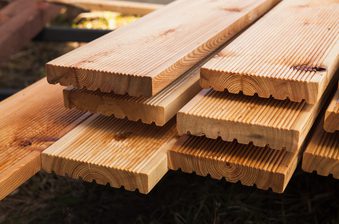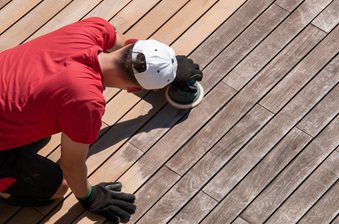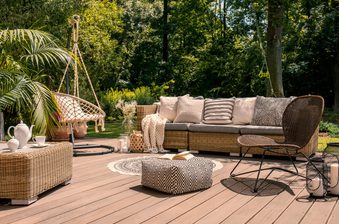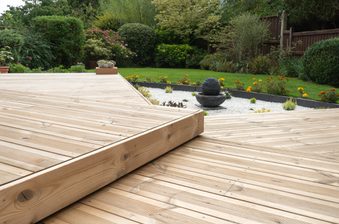Trying to make your mind up between a composite or solid timber deck?
Decking effortlessly adds a fabulous, functional touch to any outdoor space. A naturally-beautiful and versatile focal point for year-round entertainment and relaxation.
As suppliers of both pure wood decking and composite decking, we reckon we’re perfectly placed to explore these two excellent options… which is the correct choice for your project?
In a nutshell: if you value the natural beauty and authenticity of timber, then a solid wood deck should be your choice. If you're after a lower-maintenance solution and don't mind compromising on wood's natural features, then choose composite. Both types cost a similar amount of money.
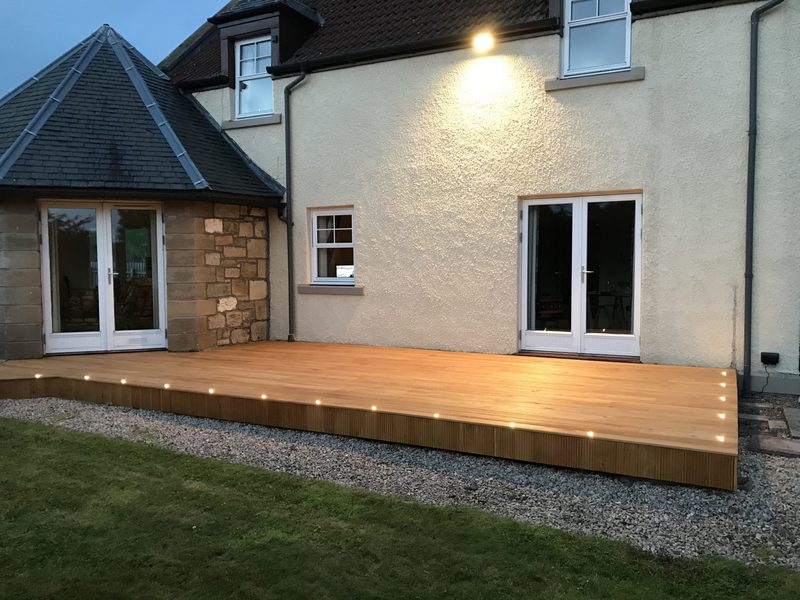
Composite decking
‘Composite’ means to be made up of several parts or elements. In the context of decking, this usually means a deck that is made of a mixture of wood and plastic. It is a man-made product. The percentage of wood or percentage plastic differs from product to product.
During manufacture, the wood and plastic elements are blended together to make one homogenous material, usually through extrusion or compression moulding. Both make use of heat and pressure to blend the materials. Colour tints or additives can be added during the process to change the colour or improve the product’s durability. Afterwards, the mixture is cooled and shaped into decking boards.
Plastics commonly used include recycled high-density polyethylene (HDPE), polypropylene (PP) and polyvinyl chloride (PVC). Some manufacturers can blend these to create their own blend. The technology involved in creating these products has advanced dramatically in recent years, and there are some excellent products now on the market.
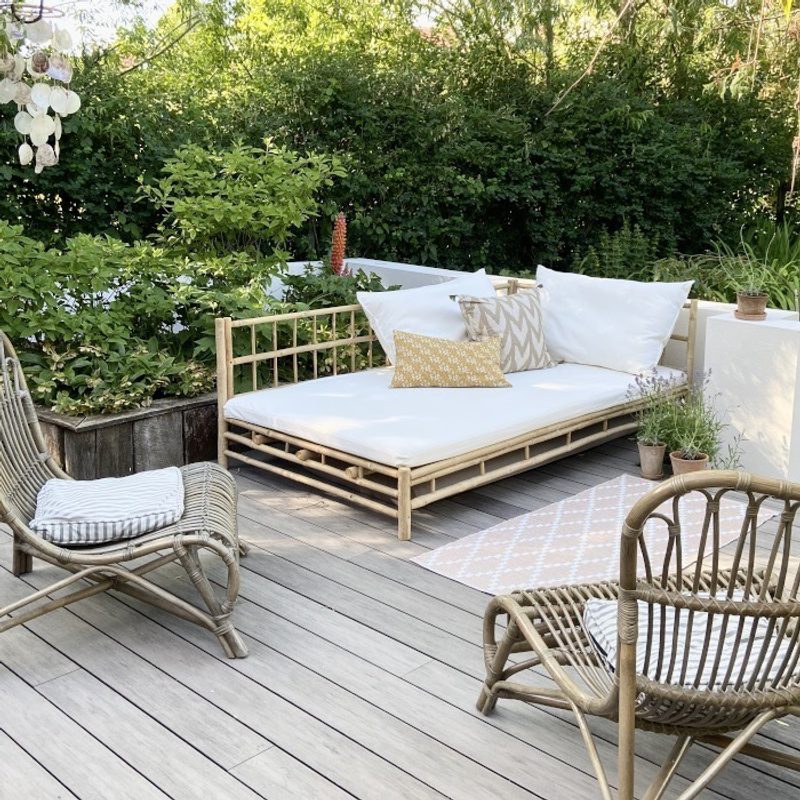
WeatherDek Grey by DeckPlus. The clean greyscale look mimics the sought-after, on-trend rustic ‘old’ look of weathered timber decking.
Composite decking: advantages
- Low maintenance: Regular solid timber can require initial treatment and regular upkeep — sanding, stripping and sealing — to keep it in its best condition. With composite decking, you don’t have to worry about woodcare products — just a regular brush and clean with some warm, soapy water will keep it looking like new. You can even powerwash it!
- Outdoor durability: The prime culprit when it comes to a deck are external threats like wood-decay fungus, insects, UV and moisture. With composite decking, the plastic element and additives involved in the manufacture of the product provide resistance to these natural forces. Composite decking boards do not absorb moisture, guarding against cracking, warping and bulging.
- Safety: One problem with wooden decks is that they can become quite the slip hazard in winter without the right care. This is much less of a problem with composite decks — yourself and your family will be better placed to stay upright all year round. There’s also a risk of splinters with timber decks which isn’t an issue with composite decks.

These reversible decking boards by DeckPlus offer light and dark options. They’re simple to clean, long-lasting and mimic the natural grey look of pure timber.
Composite decking: disadvantages
- Limited natural appearance: The whole idea of composite decking is to mimic wood’s gorgeous natural beauty, without actually being 100% wood. If having the real deal matters to you, then it’s a clear drawback to composite. You’ll sacrifice the authenticity of wood’s natural features; some find composite decking to be ‘too perfect’; every board looks and feels similar — that said, this might actually be a benefit depending on what you’re looking for!
- Limited choice and freedom: With composite decking, you’re limited to the appearance of the product offered by the manufacturer — and the colour is usually pretty much permanent. With normal wood decking, you can affect the colour of your deck with a carefully-chosen woodcare finish. Some products can actually enhance the beauty of the wood, helping the grain pattern to pop, or you can let it weather naturally. With timber, areas can be sanded down and replaced, which is much more difficult (impossible!) with composite decking.
- Less strength: Composite decking boards can be more prone to scratches and abrasion. Composite decking is not as structural as timber, meaning that you might have to bear some more upfront costs for joists and specialist clips. It can also be more challenging to install.
Wood decking
Wood decking is, as you’ll likely have gathered, a simpler affair compared to composite. A natural product, it is made from solid timber that is machined to profile, with no supplementary materials during the manufacturing process.
The durability and appearance of wood decking can then be enhanced or altered by applying woodcare finishes. Some types of wood decking can be treated during the manufacture — take ThermoWood®, for example; pine that is thermally modified to improve its durability and appearance.
Wood decking: advantages
- Natural beauty: The biggy. However durable and simple to maintain composite decking is, it is only attempting to imitate real wood. Those golden-brown hues, characterful grain patterns, gorgeous textures and knots and swirls are as authentic as it gets. Whilst composite options can look fantastic, it’s hard to argue that wood doesn’t have the edge when it comes to natural good looks and warmth. With wood, there’s no mimicry.
- Species choice: When it comes to wood decking, you have your store-bought softwood options, which can still look fine. But, if your budget allows, you could invest in a quality hardwood. This includes the timeless golden browns of temperate species like European Oak, but also the exotic reddish tones and spectrum of browns associated with tropical species like Balau and Iroko — the ‘Rolls-Royce of decking’.
- Profile choice: Just as there’s more species to choose from, with wood decking, there are a greater number of profiles available. Fluted, smooth, flat & fluted and castellated are four very different profiles, each offering their own unique character and feel — you could even ask your timber machinist to mix things up for a bespoke pattern. Great to make a statement.
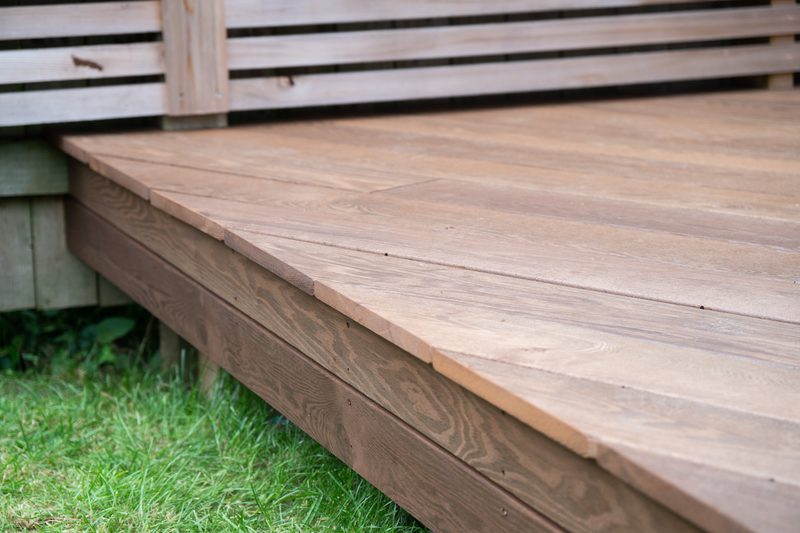
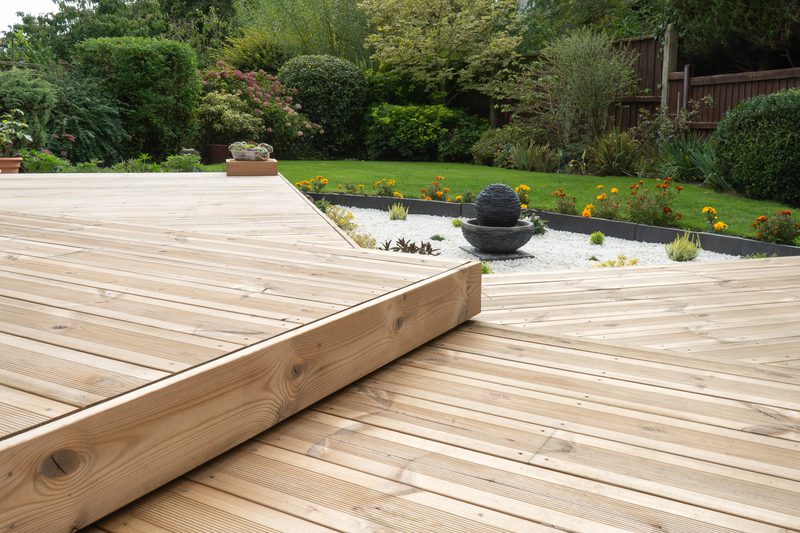
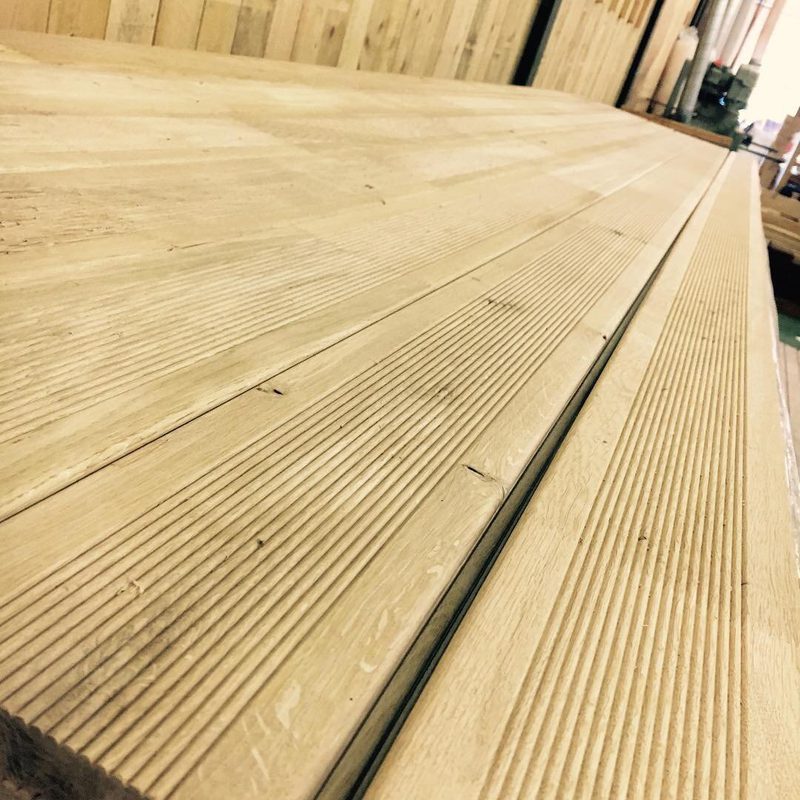
Wood decking: disadvantages
- Durability: Wood is a living, breathing material and is at risk from external threats like wood-decaying fungus, moisture and UV light. Whilst this is part of its glory, it does mean that timber has the potential to mould and rot. To avoid this, be sure to invest in a quality, sturdy hardwood (or thermally-modified softwood) and keep on top of maintenance.
- Maintenance: If even a little TLC is off the menu, then you might find wood isn’t worth your while. When you buy a deck, you take on a few responsibilities, including cleaning and re-treating — not a commitment not everyone feels comfortable with.
- Slippery when wet: In autumn and winter, rain and the mulch of leaves, dirt and debris can leave you at risk of falling flat on your back. Thankfully, there are a few simple steps you can take to enjoy a slip-free decking surface — we’ve even written a blog on the topic!
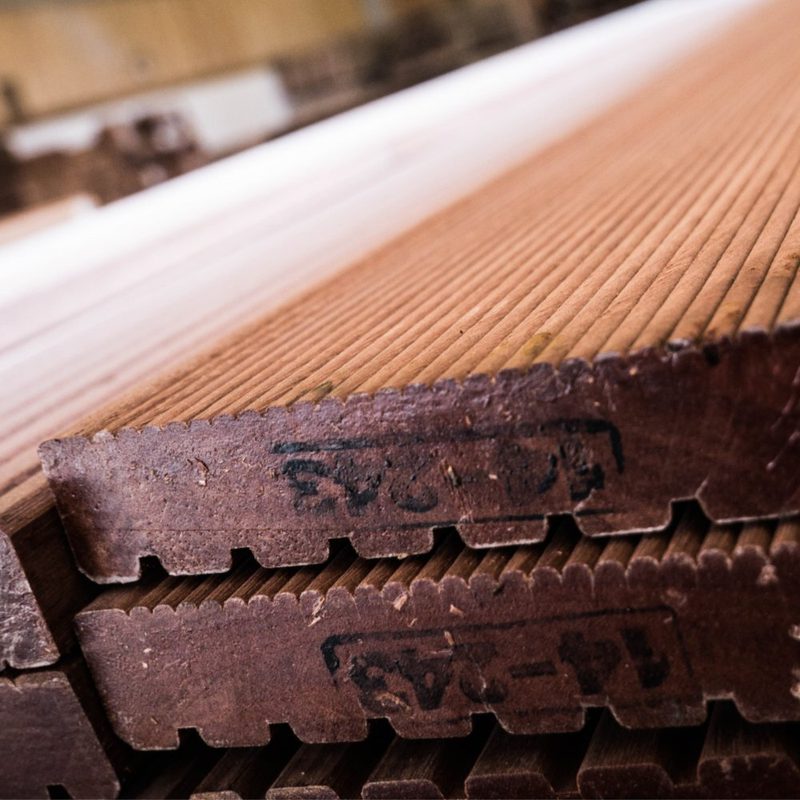
Composite vs wood decking: costs
Upfront costs for both composite decking and solid wood decking can vary drastically, making comparisons challenging. Some composite decks are available from as little as £20 per m², whilst the high-wood content WeatherDek Grey composite decking we supply comes in at £40 per m².
Similarly, when it comes to timber decking, costs vary. A tanalised (chemically-treated) softwood option bought from a DIY home improvement store or garden centre may set you back around £15 per m². A deck made from a quality timber species (like European oak or Thermo-Pine), however, can cost between £35–60 per m².
As well as this upfront expenditure, you should also factor in lifetime costs. Composite decking does not need stripping and treating, unlike wood, and so will cost less money (and time) over the course of its lifespan. So, a composite deck should result in a cost saving over time, but your mileage may vary.
Note: price examples exclude VAT and are correct as of July 2025.
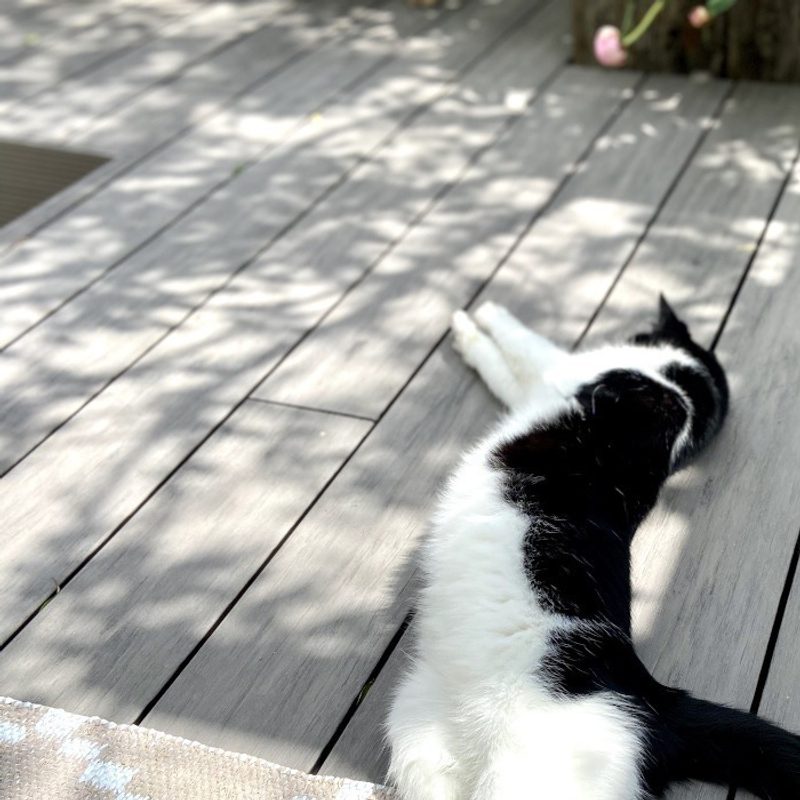
So, composite or wood decking?
If you’re seeking something ultra-low maintenance, child-safe and rot resistant but don’t mind compromising on wood’s natural features, composite is right up your alley. If you’re a timber purist, value its gorgeous authenticity and can commit to some occasional upkeep, then choose a wood deck.
Your budget shouldn’t really be a big factor in the choice between composite and wood — there are options at both ends of the price spectrum. If you choose a quality solution, both types of deck can be incredibly long-lived, durable, scratch resistant and pleasing on the eye.
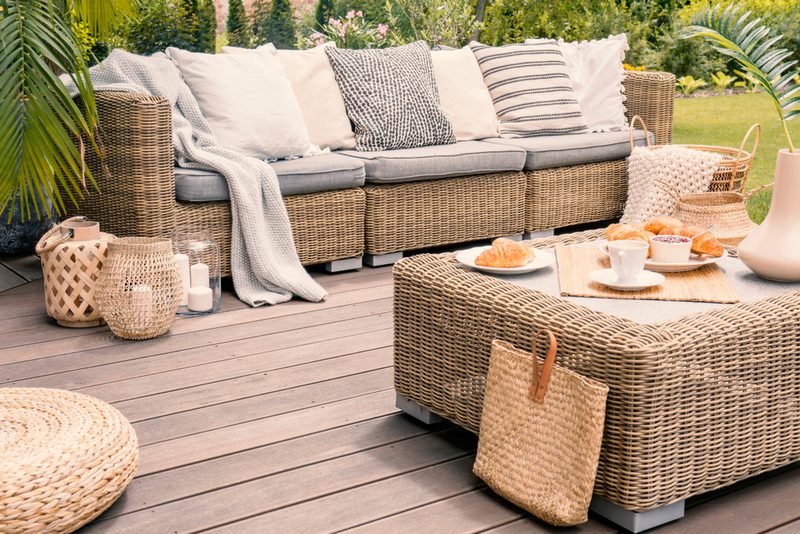
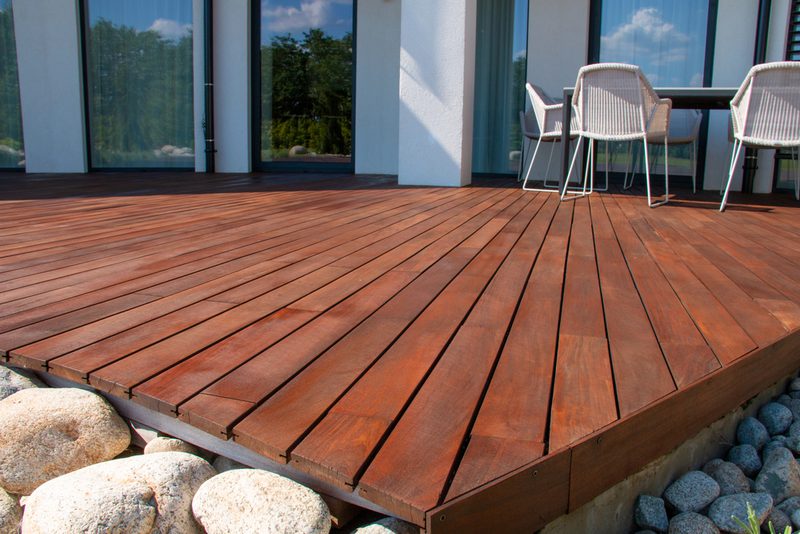
Start your decking project today
So, will it be composite or solid wood? Whichever you choose, we’re your people. We work with DIYers, self builders, architects and specifiers on decking projects of all sizes.
Our timber decking is available in a range of long-lasting, sustainable and beautiful species imported from across the globe, all machined to profile right here in Yorkshire.
When it comes to composite, we offer a range of high wood content options by DeckPlus: WeatherDek and ReversaDek. There’s light, medium and dark grey options available, as well as dedicated edging boards and clips.
Click the button below to begin your enquiry!
Get in touch

